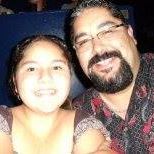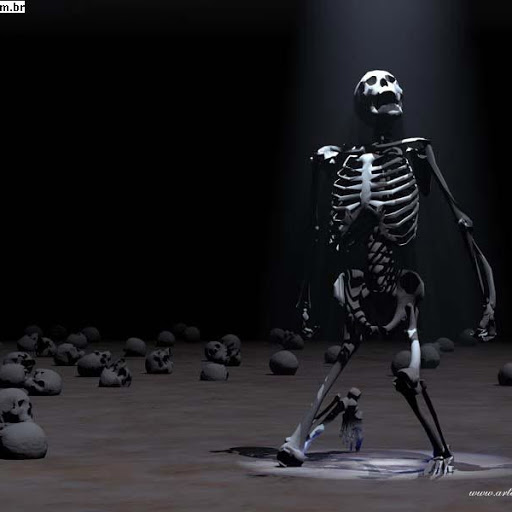John P Sousa
age ~56
from Salem, NH
- Also known as:
-
- John Philip Sousa
- John J Sousa
- John T Sousa
- John L Sousa
- John A
- Steven Floyd
John Sousa Phones & Addresses
- Salem, NH
- Dover, NH
- Lawrence, MA
- Derry, NH
- Saint Petersburg, FL
- Danbury, CT
- Lowell, MA
- 149 Warner Hill Rd, Derry, NH 03038 • 6034343621
Work
-
Company:WalmartFeb 2013
-
Position:Sales associate
Education
-
School / High School:Haverhill Highschool- Haverhill, MA2009
-
Specialities:N/a in General study
Isbn (Books And Publications)

National, Patriotic and Typical Airs of All Lands
view sourceAuthor
John Philip Sousa
ISBN #
0306708612

Marching Along: Recollections of Men, Women and Music
view sourceAuthor
John Philip Sousa
ISBN #
0403072190



Marching Along: Recollections of Men, Women and Music
view sourceAuthor
John Philip Sousa
ISBN #
0918048117



Resumes

John Sousa Fremont, NH
view sourceWork:
Walmart
Feb 2013 to 2000
Sales Associate
Feb 2013 to 2000
Sales Associate
Education:
Haverhill Highschool
Haverhill, MA
2009 to 2009
N/a in General study
Haverhill, MA
2009 to 2009
N/a in General study
Name / Title
Company / Classification
Phones & Addresses
President
Battys Shoe Clinic Ltd
Shoe Repair
Shoe Repair
2657 Shaughnessy St, Port Coquitlam, BC V3C 3G7
6049428416, 6049428416
6049428416, 6049428416
Owner
Crabtree Mc Grath Assoc Inc
Business Consulting Services
Business Consulting Services
153 Andover St # 209, Danvers, MA 01923
Website: crabtree-mcgrath.com
Website: crabtree-mcgrath.com
Principle
Mailboxes Etc
Engineering Services
Engineering Services
2193Commonwelth Ave, Boston, MA 02134
Owner
Crabtree Mc Grath Assoc Inc
Other Management Consulting Svcs
Other Management Consulting Svcs
153 Andover St #209, Danvers, MA 01923
9787626464
9787626464
President
Battys Shoe Clinic Ltd
Shoe Repair
Shoe Repair
6049428416, 6049428416
Vice President
Epec Polymers, Inc
President, Director
Town Apartments, Inc. No. 10, (A Condominium)
1900 61 Ave N, Saint Petersburg, FL 33714
Vice President
Eped Holding Company
Us Patents
-
Emitter Array With Individually Addressable Laser Diodes
view source -
US Patent:6348358, Feb 19, 2002
-
Filed:Jan 18, 2000
-
Appl. No.:09/484992
-
Inventors:John Gary Sousa - Hudson NH
Josh P. Foster - Windham NH
Thomas C. Dearman - Oro Valley AZ -
Assignee:Presstek, Inc. - Hudson NH
-
International Classification:H01L 2100
-
US Classification:438 22, 438 26, 438 33, 438456
-
Abstract:A linear array of diode laser emitters is manufactured with sufficient thermal and electronic isolation among the emitters to permit separate addressability. The emitter bar has first and second opposed surfaces and a third surface through which the emitters direct output. A first surface of the emitter bar is affixed to a âstandoffâ element that has conductive surfaces connecting each emitter to a power source; these connections are maintained after a series of spaces is formed between the emitters of the emitter bar. The second surface of the emitter bar is affixed to a heat sink to form a finished assembly.
-
Multiple-Beam, Diode-Pumped Imaging System
view source -
US Patent:6452623, Sep 17, 2002
-
Filed:Apr 20, 2001
-
Appl. No.:09/839506
-
Inventors:John Gary Sousa - Hudson NH
-
Assignee:Presstek - Hudson NH
-
International Classification:B41J 2700
-
US Classification:347256, 347241
-
Abstract:A single laser crystal is driven with multiple pumping sources to obtain discrete, collimated outputs without substantial thermal crosstalk, so that the action of one pumping source does not adversely interfere with the action of another source driving the same crystal; that is, an imaging output emanating from one crystal region will neither defeat nor spuriously cause an imaging output in another region.
-
Mode-Limiting Diode Laser Structure
view source -
US Patent:6810054, Oct 26, 2004
-
Filed:Mar 30, 2001
-
Appl. No.:09/822045
-
Inventors:John Gary Sousa - Hollis NH
Steven Stoltz - Nashua NH -
Assignee:Presstek, Inc. - Hudson NH
-
International Classification:H01S 500
-
US Classification:372 45, 372 46
-
Abstract:A laser-diode structure whose output is largely single-mode utilizes a ridged top layer that defines an amplification region within an underlying emission layer, and which is provided with grooves that suppress the higher modes.
-
Self-Cleaning Fluid Delivery Device For Medical Applications
view source -
US Patent:6860870, Mar 1, 2005
-
Filed:Dec 21, 2001
-
Appl. No.:10/034836
-
Inventors:Dean M. Pichon - Arlington MA, US
David J. Nedder - Attleboro MA, US
John R. Sousa - Littleton MA, US
J. Jeffrey Kablik - Tyngsboro MA, US
Albert H. Linder - Hagen, DE -
Assignee:Focal, Inc. - Lexington MA
-
International Classification:A61M005/00
-
US Classification:604191, 604 82, 604187, 604118, 604121, 604119, 604173, 222135, 2223865, 222630, 222389, 222263, 606213
-
Abstract:A gas powered spraying device that can be used for single or multi-part reactive medical polymer compositions is provided. A fluid or one or more reactive solutions are sprayed independently at a tissue surface, and the spraying of each solution of multi-component embodiments is controlled by a separate valve. Each solution is provided with a separate spray outlet, and each spray outlet is surrounded by an annular sheath of flowing gas. Gas flow is provided at two or more flow levels, including a high level flow for active spraying and a low level bypass flow to remove drips and prevent clogging, which can improve device reliability. Gas pressure can be used to drive fluid to its spray outlet, as well as to spray the fluid from the outlet to the tissue surface.
-
Graphic-Arts Laser Imaging With Reduced-Length Laser Cavities And Improved Performance
view source -
US Patent:7525562, Apr 28, 2009
-
Filed:May 3, 2005
-
Appl. No.:11/121310
-
Inventors:John Gary Sousa - Hudson NH, US
-
Assignee:Presstek, Inc. - Hudson NH
-
International Classification:B41J 2/45
H01S 3/08 -
US Classification:347238, 372103
-
Abstract:Cavity lasers exhibit a relatively high beam quality (e. g. , M
-
Laser Imaging System With Variable Energy Flux Densities
view source -
US Patent:20020101503, Aug 1, 2002
-
Filed:Feb 1, 2001
-
Appl. No.:09/775133
-
Inventors:John Sousa - Hollis NH, US
Mark Fernald - Amherst NH, US -
International Classification:B41J027/00
-
US Classification:347/256000
-
Abstract:A variable filter arrangement is interposed within the optical path of an apparatus containing a source of imaging radiation directed along an optical path for imaging a recording construction. The variable filter arrangement facilitates selectable reduction in the output energy density of the radiation source without substantially altering the focal length of the optical path. The variable filter arrangement may utilize multiple independent lenses of varying energy density reduction levels or a filter of unitary construction with progressive densities so as to provide a selectable continuum for reduction in the output energy density of the imaging radiation.
-
Method Of Calibrating Distances Between Imaging Devices And A Rotating Drum
view source -
US Patent:60914343, Jul 18, 2000
-
Filed:Apr 29, 1998
-
Appl. No.:9/069692
-
Inventors:John Gary Sousa - Hudson NH
-
Assignee:Presstek, Inc. - Hudson NH
-
International Classification:B41J 239
-
US Classification:347149
-
Abstract:Optimization of distances between each of an array of imaging devices and the surface of an oppositely disposed rotating drum is accomplished without disturbing the mechanical mounting of the imaging devices. For each device, an optimal distance from the recording construction is established; at this optimal distance, corresponding to substantially proper focus, maximum energy density is delivered to a recording medium on the drum. Rather than alter the actual device-to-drum distance to conform to this optimum, the optical paths between the devices and the drum are changed by varying the spacing between the radiation source (e. g. , the end of a fiber-optic cable) and the assembly. This alters the point of focus, and therefore has the same practical effect as moving the device itself. The invention also provides a technique for determining the optimal device-to-drum distance by means of a sequence of imaged regions applied at different device-to-drum distances.
-
Ink Curing Apparatus
view source -
US Patent:49281127, May 22, 1990
-
Filed:Mar 23, 1987
-
Appl. No.:7/028924
-
Inventors:Allan G. Hock - Londonderry NH
John R. Larson - Hamstead NH
John G. Sousa - Nashua NH -
Assignee:Howtek, Inc. - Hudson NH
-
International Classification:G01D 1516
B41J 304 -
US Classification:346 25
-
Abstract:An ink curing apparatus for use with an ink jet printer that discharges liquefied ink is disclosed. The apparatus includes a shell assembly disposed around the portion of the printer imaging assembly that includes the ink jets. The imaging assembly and the shell wall are shaped so that a first cavity is formed between the imaging assembly and the paper printed on, and a second cavity is formed between the paper and the shell wall. A pair of fans are arranged to draw air currents over both sides of the portion of the paper that is being printed on. The air currents cool the paper so the ink solidifies upon contact with the paper and does not soak through it. The air currents also insure that the ink solidifies at a uniform rate regardless where it is applied on the paper. This insures the final image on the paper has a uniform appearance. The air currents also urge the portion of the paper being printed on against a frame structure that is an integral part of the shell so as to secure the paper during the printing process.

John de Sousa
view source
John De Sousa
view source
John Philip Sousa
view source
John James Sousa
view source
John Sousa
view source
John De Sousa
view source
John De Sousa
view source
John de Sousa
view sourceMyspace
Googleplus

John Sousa
Work:
None
Education:
None

John Sousa
Education:
University of Southern Maine - Information technology

John Sousa
Work:
Wells Fargo - Private Mortgage Banker

John Sousa

John Sousa

John Sousa

John Sousa

John Sousa
Flickr
Youtube
Classmates

John Sousa
view sourceSchools:
Chapman Technical High School New London CT 1941-1945
Community:
Suzanne Foor, Jerry Sorenson, Suzanne Bell, Carlton Kydd, John Hemm, Marvin Perrigo

John de Sousa
view sourceSchools:
North Yarmouth Academy Yarmouth ME 1959-1963
Community:
John Cronin

John Sousa
view sourceSchools:
Kinloch Park Middle School Miami FL 1982-1986
Community:
Linda Chickansky, James White, Deborah Hopkin, Rachelle Fenton

John Sousa
view sourceSchools:
Sir Charles Tupper Secondary School Vancouver Saudi Arabia 1981-1985
Community:
Dudley Gordon, Brian Bileski, Barbara Auld, Ben Berg, Dennis Omalley

John Sousa
view sourceSchools:
Screven High School Screven GA 2001-2005
Community:
Carol Minkovitz, Robert Canady, Jimmy White

John Sousa
view sourceSchools:
Columbus High School Boston MA 1980-1984
Community:
Mary Gallarelli, Rose Messineo, John Brennan

John Sousa
view sourceSchools:
Rensselaer High School Rensselaer NY 1961-1965
Community:
Reese Worden, Dorothy Hager
Plaxo

John H Sousa, AIA
view source
John de Sousa
view sourcefremont
Get Report for John P Sousa from Salem, NH, age ~56
















